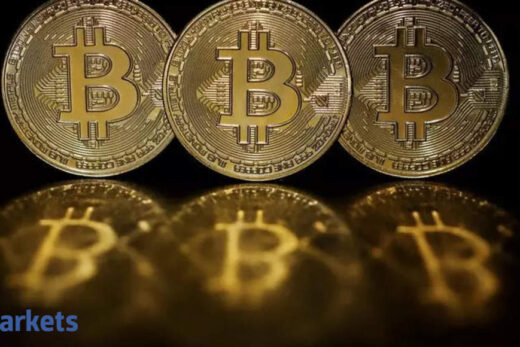The Federal Open Market Committee is all but certain to hold interest rates near zero at the conclusion of its two-day policy meeting on Wednesday, and repeat a vow to keep buying bonds at the current $120 billion monthly pace. The panel will release a statement at 2 p.m. and Powell will hold a press briefing 30 minutes later. No quarterly forecasts are scheduled to be published after this gathering.
“They are going to be very, very patient,” said Julia Coronado, president of MacroPolicy Perspectives. “The near-term economy is worse than they expected and the virus is terrible. They will hold the line until the vaccines and fiscal policy can do the work of improving things.”
 Bloomberg
BloombergWhile optimism for a strengthening US recovery later this year has grown amid positive news on vaccines and hopes of fresh fiscal support, the country faces a rough winter after a surge in infections over the holidays and a sluggish roll-out so far in inoculations.
That’s hit the labor market, including a loss of 140,000 jobs in December, reinforcing the risks of a more protracted downturn. While the committee’s members may see vaccines and more fiscal aid as bolstering the outlook by year’s end, they are likely to emphasize the need for continued monetary support.
What Bloomberg economists say
“BE expects the overarching theme of the January meeting to be consistent with Powell’s recent public comment that this is not the time to talk about a policy exit. Instead, he will stress that the Fed stands ready to provide additional support to the economy, predominantly through even more aggressive asset purchases.”
— Carl Riccadonna, Yelena Shulyatyeva, Andrew Husby and Eliza Winger.
Asset purchases
The FOMC is expected to reiterate its December guidance that the committee will continue monthly purchases of $80 billion in Treasuries and $40 billion of mortgage-backed securities until there’s “substantial further progress” on employment and inflation. That goal seems unlikely to be met until 2022, according to a recent Bloomberg survey of economists.
While the Fed chair has said there’s reason for hope about an end to the crisis, he’s also emphasized that “now is not the time” to be discussing an exit from stimulus.
Those Jan. 14 remarks, shortly before the Fed entered its blackout period ahead of this meeting, were a clear sign that he wants to avoid a repeat of the damaging 2013 taper tantrum, when the Fed’s disclosure that it was weighing a reduction in bond purchases caught investors off guard and sent yields rocketing higher.
Treasury yields have risen amid talk of tapering as well as brighter economic forecasts.
“Powell will be less excited about fiscal stimulus than the market is right now, and on the contrary, he will be a bit more anxious about new virus strains and the risk they pose,” said Thomas Costerg, senior US economist at Pictet Wealth Management.
FOMC statement
The statement is likely to acknowledge a deceleration in economic activity — including a challenging labor market — but make no alterations to its guidance on future policy.
“There is not a good case for big changes in the statement,” said Jim O’Sullivan, TD Securities’ chief US macro strategist. “You could have a little optimism over the medium term with vaccines and more fiscal spending, but in the here and now we are having trouble and vaccinations are going slower than hoped.”
 Bloomberg
BloombergPress conference
Powell is likely to be asked about working with the new administration of President Joe Biden, including his relationship with Treasury Secretary Janet Yellen who proceeded him as Fed chair, and the need for additional fiscal support.
Powell and his colleagues were vocal advocates for more fiscal spending last year, with lawmakers delivering another $900 billion in aid in late December. Biden has proposed an additional $1.9 trillion in stimulus but Republicans — and even some of his own Democrats in the Senate — have questioned if that much is really needed with the economy expected to pick up in the second half of 2021.
Powell may be asked about his desire for a second term as Fed chair when his current tenure expires in February, 2022. Nearly three-quarters of economists surveyed by Bloomberg believe Biden will offer him the opportunity.
 Bloomberg
BloombergFinancial stability
Powell can also expect questions about financial-stability concerns and speculative excess amid record levels for US stocks after investors went on a buying binge in a world of slim returns.
Yields have fallen on even the riskiest debt, penny stocks and Bitcoin have surged, while cash pouring into special-purpose acquisition companies, or SPACs, is another sign of “unsustainable excess,” according to strategists at Goldman Sachs Group Inc.
US central bankers have so far played down the concerns of a bubble, noting that while valuations are high in some places, the wider picture is mixed.
Powell told reporters on Dec. 16 that there were not a lot of “red flags” visible, though the Fed is keeping financial stability under constant surveillance. The 2007-2009 recession was sparked by excesses in housing, and the 2001 downturn followed the collapse of the tech-stock bubble: triggers that Powell has pointed out in the past.
IOER
Economists say it’s possible the Fed could tweak its interest rate on excess reserves, currently 0.10%. But such a move would be a technical adjustment that has no monetary-policy implications. Rather, it would be designed to help policy makers keep their benchmark federal funds rate within the target range. A move on IOER is more likely later in the year, said Jay Bryson, chief economist with Wells Fargo & Co.



